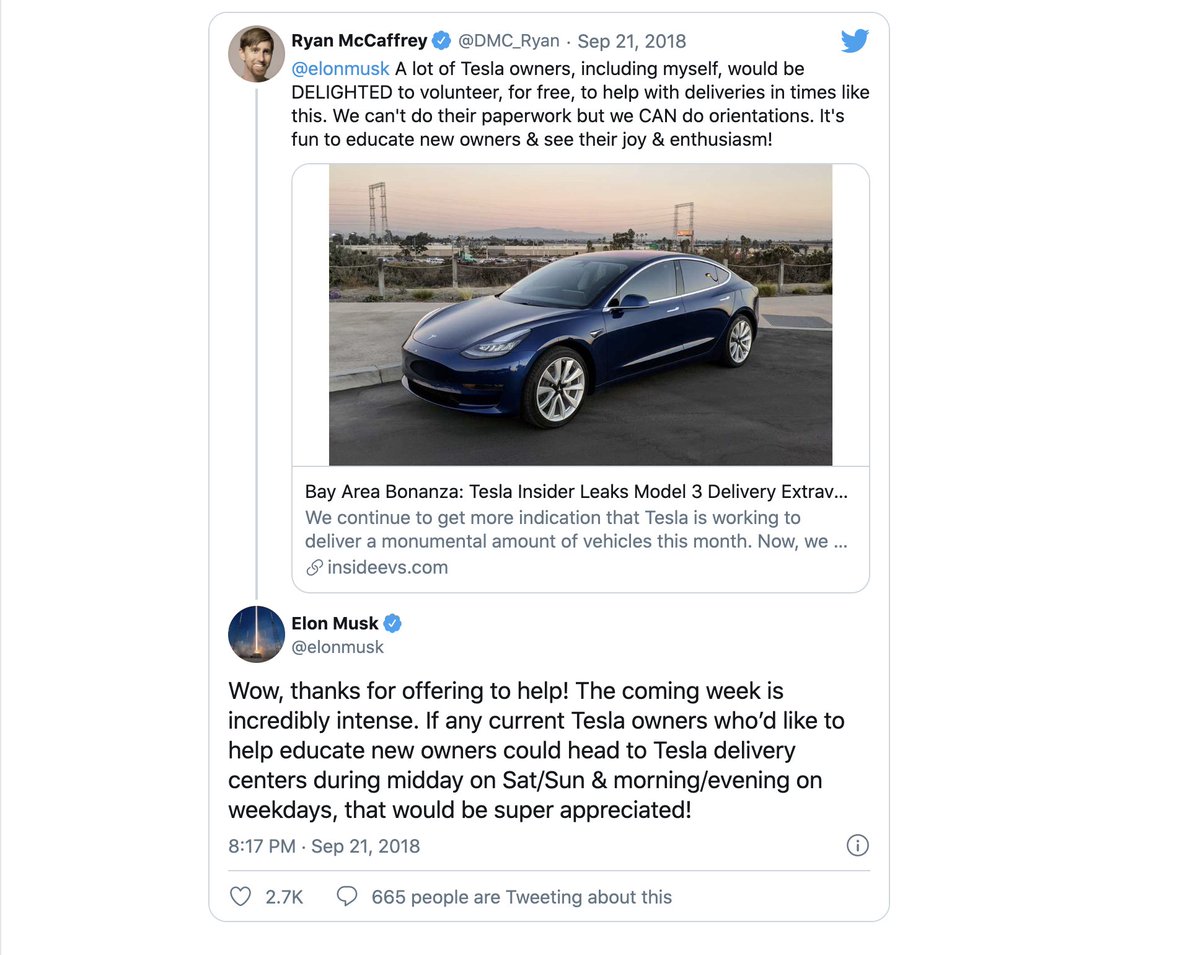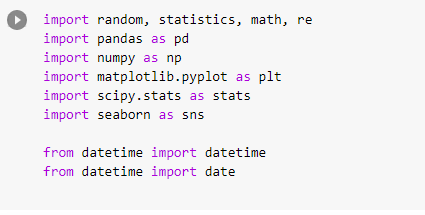2/ What is a mission statement?
At its core, a mission statement should answer this question:
*****Why does the company exist?*****
A profound question that is easy to overlook!
3/ When used properly
Mission Statements should guide ALL of the actions of the organization
It's like a company's North Star
If an activity doesn’t advance the mission,
it should be discarded!
If an activity does advance the mission,
it should be adopted!
4/ A Mission and a Vision statement are different
Mission: WHY the company exists
Vision: What the company/world looks like if the company is successful
Both important, but they are NOT interchangeable
5/ The reason I used to think mission statements didn't matter
is because the vast majority of companies/CEOs
don't believe they matter!
Most companies SUCK at creating & communicating them!
Why should employees/shareholders care about a mission
if the company/CEO doesn't?
6/Let's get back to that key question
****Why does the company exist?****
What problem is the company trying to solve????
7/Great mission statements answer this question
and have a few things in common
1⃣Simple - as few words as possible
2⃣Inspirational -- they motivate all stakeholders
3⃣Optionable -- they leave the "how" open-ended
4⃣Communicated often -- Managers restate the mission regularly
8/ It's not hard to find bad mission statements
I randomly choose Proctor & Gamble
I searched "Proctor & Gamble mission statement"
$PG doesn't have a mission statement, but rather a purpose
Here's what it says:
9/ How many of $PG's thousands of employees do you
think could recite this purpose word for word?
I bet it rounds to zero
Is it:
1⃣Simple - no!
2⃣Inspirational -- eh
3⃣Optionable -- sort of
4⃣Communicated often -- not from what I see
FAIL! FAIL! FAIL! FAIL!
10/ How could this be improved?
Here's my suggestion:
11/
"To improve the lives of the world's consumers"
THAT would be a great mission
Imagine if $PG actually said/believed this
and communicated it often.
I bet it would help to align ALL of $PG's key stakeholders
AND dramatically simply decision making across the company
12/ Even if you loathe $TSLA &
@elonmusk, I bet you have heard the company's mission!
“to accelerate the world’s transition to sustainable energy.”
1⃣Simple - yes!
2⃣Inspirational -- yes!
3⃣Optionable -- yes!
4⃣Communicated often -- yes!
13/ $TSLA communicates this mission OFTEN
Which aligns ALL of $TSLA's key stakeholders
1⃣Customers
2⃣Employees
3⃣Investors
4⃣Managers
5⃣Suppliers
6⃣Society
behind its mission
14/ Remember when
@elonmusk decided
to OPEN SOURCE $TSLA's patents?
WHY WOULD ANY COMPANY DO THIS????
Answer:
Doing so
*accelerates the world’s transition to sustainable energy*
15/ Anyone remembered when $TSLA's customers
VOLUNTEERED TO WORK FOR FREE
(FOR FREE)
to help the company?
Think about that!
Is it possible that they did so
because they believe so deeply in the company's mission?
16/ $TSLA is an outlier in a bazillion ways
So who else nails mission statements?
$ZNGA: "to connect the world through games"
$CRWD: "to protect our customers from breaches"
$AAXN: "to protect life"
A+ all around!
17/
@themotleyfool mission statement:
"to make the world smarter, happier, and richer."
Fool Live was launched in 2020 in response to COVID-19
@TomGardnerFool &
@DavidGFool asked:
Will Fool Live "make the world smarter, happier, and richer?"
Yes, Yes, Yes
Do it!
18/ You may know my career mission statement
"to spread financial wellness"
My time is aligned around this mission
I spend A TON of time on Twitter, Fool Live, & Podcasts
Financially, this makes little sense
but, it's THE BEST way that I know
"to spread financial wellness"
19/ Coming up with a great mission statement is HARD
Like, REALLY hard
Took me a long time to settle on
"to spread financial wellness"
Lots of conversations with
@TMFStoffel (who is the person that turned me on to the power
of mission statements the most)
20/ If you create a great mission statement for yourself
I bet you'll make different decisions
both in the short-term and long-term!
21/ Loved this recent thread by
@justinkan (Co-founder of
@Twitch) His #1 lesson from a recently failed startup?
"Start with the mission"
A+ from me!
https://t.co/pCq4ZtVHyo
22/ Mission Statements matter
If you are a CEO / entrepreneur
THINK HARD ABOUT YOUR COMPANY'S MISSION
and communicate it often!
Don't overlook it, and be sincere
If your REAL mission is "to make myself rich"
I don't want to buy from you or work for you
23/ What's your mission?
I'd love to hear it!


